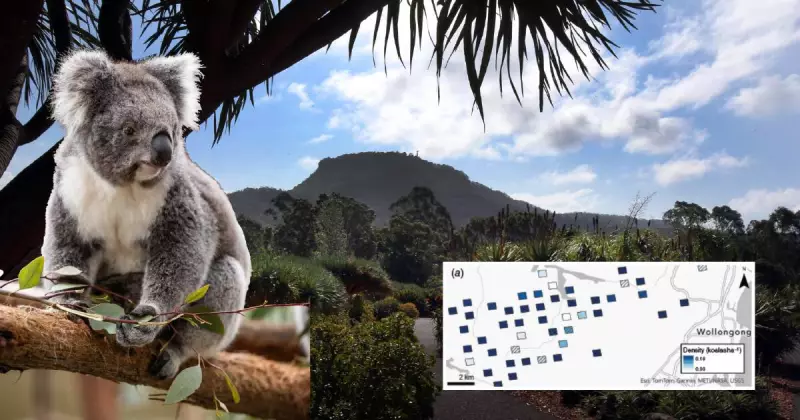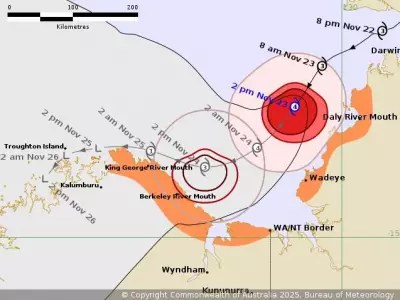
In a groundbreaking environmental discovery, researchers have uncovered a significant koala population thriving in the Illawarra Escarpment using advanced thermal drone technology. The study reveals what scientists are calling a hidden stronghold for the endangered marsupials located surprisingly close to Wollongong's urban areas.
Revolutionary Technology Uncovers Hidden Populations
Researchers from the University of Wollongong and Symbio Zoo at Helensburgh conducted the innovative survey over two years, publishing their findings in the journal Australian Mammalogy. The team employed thermal drones to scan the difficult terrain, identifying 56 koalas and 127 southern greater gliders, another endangered species, across the study area.
Lead author Jordyn Clough, a PhD candidate in UOW's Environmental Futures research group, explained the significance of their methodology. "Thermal drone technology has revolutionised how we find and count cryptic wildlife," Clough said. "These results reveal that the forests south of Sydney are far more significant for conservation than previously recognised."
Three Key Hotspots Identified
The research pinpointed three specific areas with particularly abundant koala populations on Wollongong's urban fringe:
- Bushland behind Keiraville
- The eastern side of Mount Keira
- Mount Kembla
However, the most densely populated region for koalas was found to be above the escarpment in bushland between the Cordeaux and Cataract dams. The study establishes crucial baseline data that will inform future conservation efforts in the region.
Collaborative Conservation Effort
The project brought together diverse expertise, including Symbio's Kevin Fallon and Jarred Prangell, UOW ecologist Katarina Mikac, and drone methodology pioneer Dr Chad T. Beranek. Funding came from Symbio and mining company GM3, whose Dendrobium mine lease overlaps with the identified koala habitat.
Kevin Fallon, Symbio's senior business manager and chief drone pilot, emphasized the project's importance. "This project shows what's possible when collaboration, technology and conservation work hand-in-hand," Fallon stated. "Together with all of our partners, we've delivered a scientific milestone right here on our doorstep."
Dr Katarina Mikac highlighted how the methodology transforms ecological research. "We can now monitor wildlife across vast, steep and otherwise inaccessible forest systems," Dr Mikac said. "This is the future of ecological research and a vital step in protecting Australia's endangered species."
The timing of this discovery is particularly crucial given recent environmental challenges. Fallon noted that "following on from fires, floods, and threats of Chlamydia encroaching these important populations, having a better understanding for future species management programs is essential."
This landmark study not only reveals the Illawarra and Southern Sydney Surrounds as critical strongholds for both koalas and southern greater gliders but also establishes a replicable baseline for all future monitoring programs to compare against.





